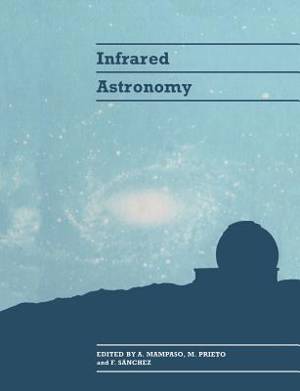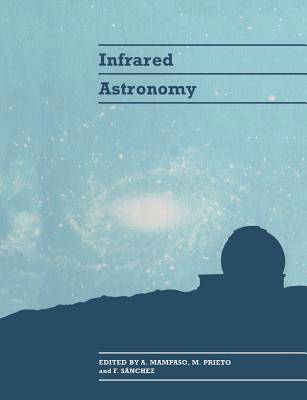
- Afhalen na 1 uur in een winkel met voorraad
- Gratis thuislevering in België vanaf € 30
- Ruim aanbod met 7 miljoen producten
- Afhalen na 1 uur in een winkel met voorraad
- Gratis thuislevering in België vanaf € 30
- Ruim aanbod met 7 miljoen producten
Infrared Astronomy
Paperback | Engels
€ 74,95
+ 149 punten
Omschrijving
What do we understand of the birth and death of stars? What is the nature of the tiny dust grains that permeate our Galaxy and other galaxies? And how likely is the existence of brown dwarfs, extrasolar planets or other sub-stellar mass objects? These are just a few of the questions that can now be addressed in a new era of infrared observations. IR astronomy has been revolutionised over the past few years by the widespread availability of large, very sensitive IR arrays and the success of IR satellites (IRAS in particular). Several IR space missions due for launch over the next few years promise an exciting future too. For these reasons, the IV Canary Islands Winter School of Astrophysics was dedicated to this burgeoning field. Its primary goal was to introduce graduate students and researchers from other areas to the important new observations and physical ideas that are emerging in this wide-ranging field of research. Lectures from nine leading researchers, renowned for their teaching abilities, are gathered in this volume. These nine chapters provide an excellent introduction as well as a thorough and up-to-date review of developments - essential reading for graduate students entering IR astronomy, and professionals from other areas who realise the importance that IR astronomy may have on their research.
Specificaties
Betrokkenen
- Uitgeverij:
Inhoud
- Aantal bladzijden:
- 428
- Taal:
- Engels
Eigenschappen
- Productcode (EAN):
- 9780521548106
- Verschijningsdatum:
- 22/01/2004
- Uitvoering:
- Paperback
- Formaat:
- Trade paperback (VS)
- Afmetingen:
- 192 mm x 245 mm
- Gewicht:
- 771 g

Alleen bij Standaard Boekhandel
+ 149 punten op je klantenkaart van Standaard Boekhandel
Beoordelingen
We publiceren alleen reviews die voldoen aan de voorwaarden voor reviews. Bekijk onze voorwaarden voor reviews.








